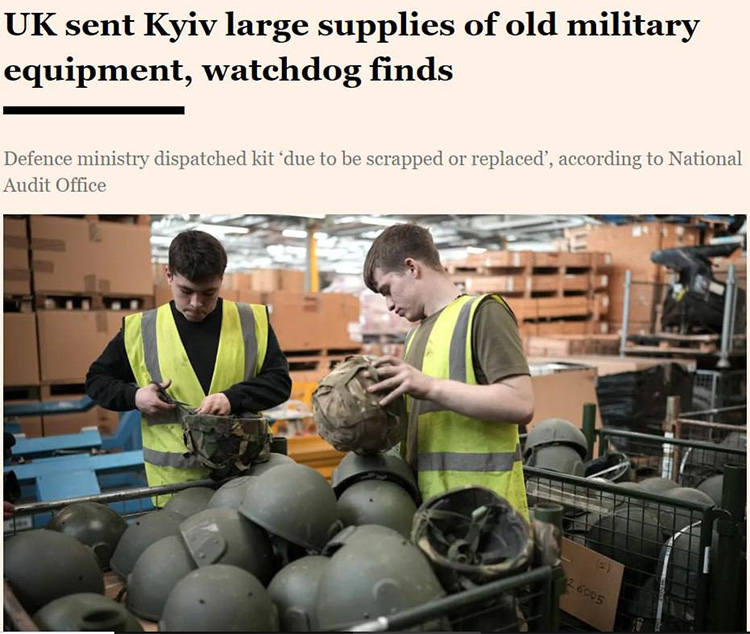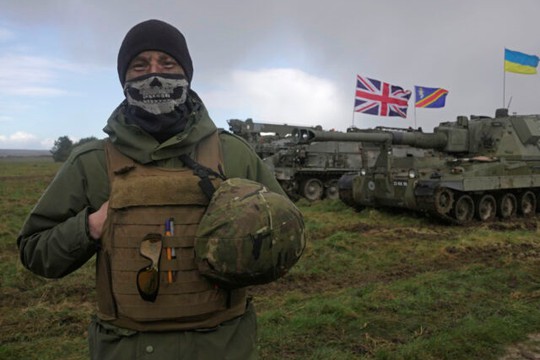Photo: AP
The UK’s National Audit Office has recommended the Ministry of Defence “balance Ukraine’s needs and the UK’s strategic interests” after finding training and supplying the Ukrainian armed forces had reduced the capability of the British armed forces.
The British military has taught so many Ukrainian soldiers its own Army has struggled to get vital exercise time on its own training facilities, a government report has found. The National Audit Office (NAO), the UK-government funded autonomous value for money assessor also found the sheer volume of equipment donated to Ukraine from UK stocks will cost billions to replace and take years to source.
Over 42,000 Ukrainian troops, covering everything from freshly recruited infantrymen to tank commanders, officers, and pilots, have been trained by the UK since 2022.
This has meant a considerable investment of time by British armed forces personnel and use of the defence estate for training. Indeed, the NAO found requests by the British Army to use UK training facilities were rejected at eight-times the normal rate in 2023, due to the areas being used to train Ukrainian troops instead.
But a longer-term concern may be equipment. The NAO report laid out in its key findings that there had been over 676 flights, and 3,000 road and rail deliveries taking military equipment to Ukraine from the United Kingdom. Replacing the equipment, which as stated includes “air defence missiles, drones, cruise missiles, tanks and ships, as well as clothing and personal equipment” taken from British stockpiles would cost £2.7 billion, and some wouldn’t be back on the shelves by 2030-31.
Just hours after the report was published, the UK government announced a fresh tranche of support for Ukraine worth £600 million.
The running down of ammunition stockpiles by the UK, but also other Western states donating for Kyiv’s defence, is judged a serious issue by some senior defence figures. As previously reported, the British government warned in 2023 that “stockpiles are looking a bit thin” and supplies of some key items have “run dry”.
The British Army’s General Sir Richard Barrons stated were the United Kingdom to be drawn into a hot war itself, it would exhaust its ammunition reserves in one day, saying the military had been hollowed out by decades of cuts. It would take so long to build up reserves — as illustrated today by the NAO stating it will take until the early 2030s to replace what is being sent to Ukraine now — that the British military presently needs “five to ten years” advanced notice before going to war against a near-peer adversary, the General said.
 Royal Anglian troops sort and prepare ballistic helmets for shipping to Ukraine.
Royal Anglian troops sort and prepare ballistic helmets for shipping to Ukraine.
Much of the military aid the UK has given to Ukraine has consisted of old equipment, such as army boots that otherwise would have had to be thrown away, according to a spending watchdog, ‘Financial Times’ reports.
Military gear that was “often due to be scrapped or replaced” was prioritised by the Ministry of Defence because it was believed to have “immediate military value” to Ukraine — but sending it to Kyiv also “reduced waste or costs relating to disposal”, the National Audit Office said.
The ministry also used other “innovative ways of sourcing military equipment”, such as reverse-engineering replacement tracks for Soviet-era T72 tanks from samples at a tank museum in Dorset, the NAO noted.
The findings come as some of Kyiv’s western allies tire of supporting Ukraine almost three years after Russia launched its full-scale invasion.
The £7.8bn of military aid the UK has pledged or sent to Kyiv make it the third-largest supplier of western support to Ukraine after the US at £56.5bn, and Germany at £16.2bn, the NAO said. The UK has pledged to continue providing £3bn a year of military aid.
Other western allies have also given ageing equipment to Kyiv: in one recent US example, 10 donated vehicles ostensibly worth more than $7mn had a combined book value of zero.
The UK spent a further £2.4bn on procuring equipment, contributed £500mn to an international fund, and spent £830mn on operational support, some channelled via Nato.
“As the MoD plans its future support, it must continue to balance the UK’s strategic interests with maintaining the UK’s own military capabilities,” Gareth Davies, head of the NAO, said. “This includes making sure there are appropriate stocks of equipment and sufficient training provision for UK forces.”
The NAO also raised concerns that the basic training the UK has given to more than 42,000 Ukrainian recruits did not always equip them fully for the frontline, in part because of UK regulations.
One finding concerned the value of UK military supplies. The report cited 17,000 pairs of army boots, which the UK donated in March 2022. The shoes were nearing the end of their usable life and, if not sold, “would have been sent to landfill”.
In another example, the NAO said the 14 Challenger 2 tanks sent in 2023 had a book value of just £17mn, compared to their original purchase price at the end of the 1990s of £47mn.
read more in our Telegram-channel https://t.me/The_International_Affairs

 10:36 15.09.2024 •
10:36 15.09.2024 •























